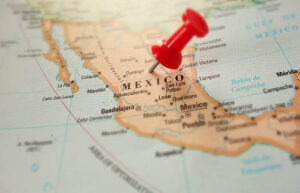This article seeks to offer an overview of cultural, social, and economic similarities and differences between Mexico and Europe. Mexico resides within North America while Europe covers an expanse of countries located throughout its territory. Despite their geographical separation, these regions share a complex historical connection – with European colonization having had an influence in Mexico itself. It is very different to live in Mexico compared to Europe, but there are some similarities as well.
By exploring key areas such as language, religion, food, education and economy in comparison between both regions we may gain a more complete picture of their unique features as well as any connections or conflicts that exist between the two regions that we will gain insights into similarities or differences that exist between both regions compared against each other compared against each other compared with each other compared with one another region such as.
Cultural Differences

Customs and traditions vary significantly across Mexico and Europe; food served in Mexico tends to be spicy while that served in Europe can vary between nations but tends to be less so. Furthermore, Mexican culture puts an emphasis on family gatherings and celebrations while European culture tends to be more individualistic in comparison. A lot of people think that food is better in Mexico compared to Europe.
Though they differ significantly in culture and society, Mexico and Europe have had many notable cultural exchanges over time. Spanish colonization brought European art, architecture, language, cuisine, restaurants and food festivals into Mexico which left an indelible mark upon Mexican society and cuisine alike. Furthermore, cultural exchanges can occur via music or dance performances where traditional Mexican forms can be performed across Europe or vice versa.
Overall, cultural differences between Mexico and Europe can be striking; yet opportunities exist for cultural exchange and mutual influence to arise.
Social Differences
Mexico and Europe differ significantly when it comes to social structures, gender roles, education and healthcare services. Europe tends to feature more social welfare programs and an expanding middle class while Mexico boasts greater wealth gaps with an increasing percentage of population living in poverty.
Gender roles also differ between Mexico and Europe, with men typically expected to assume primary breadwinner responsibilities while women focusing on family caregiving duties. Conversely, European gender roles tend to be more egalitarian with both sexes sharing equally in work-family balance responsibilities.
There are also notable differences in education and healthcare between Europe and Mexico, where education tends to be more accessible through free or low-cost higher education systems; on the other hand, access can be limited for those living in poverty in Mexico; European healthcare tends to provide comprehensive yet accessible coverage while rural Mexico may face restrictions that prevent access to quality health services.
Mexico and Europe both employ social policies aimed at alleviating poverty and inequality, such as social welfare programs and minimum wage laws; however, their implementation and effectiveness varies considerably across nations in Europe as well as within Mexico itself. If you want to know, How big is Mexico compared to Europe? Is Mexico bigger than Europe? In terms of land area, Europe is almost three times larger than Mexico.
Mexico and Europe differ significantly when it comes to social structures, gender roles, education and healthcare; yet both regions are actively striving to address these disparate conditions and promote greater equality and social well-being.
Economic Differences

There are also notable trade agreements between Mexico and Europe, such as the Comprehensive and Progressive Agreement for Trans-Pacific Partnership (CPTPP) and European Union-Mexico Free Trade Agreement (FTA), that aim to lower trade barriers while expanding economic cooperation across both regions – providing increased trade and investment opportunities between them.
Overall, although Mexico and Europe differ significantly when it comes to economic systems, GDP, inflation rates, unemployment rates and trade agreements; there remain opportunities for increasing cooperation and trade between them through trade agreements or other measures. Mexico vs Europe differences GDP is clear at the first sight.
Similarities
Now let’s compare Mexico vs Europe size. Despite their many differences, there are also notable cultural, social, and economic similarities between Mexico and Europe. For example, both regions have a rich history of art and literature, with many influential artists and writers hailing from both Mexico and various European countries. In terms of social similarities, both regions place a high value on education and have a strong tradition of higher education institutions. Mexico compared to Europe similarities demonstrate the interconnectedness of our world, despite their many differences in terms of size, economic systems, and cultural traditions. For example, both regions have a rich history of art and literature, and both place a high value on education and higher education institutions. Mexico compared to Europe size difference is clear on a map. A lot of people also wonder about Mexico vs EU. We are going to explore that topic as well.
In order for Mexicans to visit Europe after 2025, they will need to get a new type of visa. European Travel Information and Authorization System, or ETIAS for short, is a new security measure of the EU. The main goal of the system is to enhance EU’s efficiency against external security and epidemiological threats by pre-screening visitors before their arrival.
Other Similarities
Additionally, both Mexico and Europe have been shaped by their colonial histories, with Mexico being colonized by Spain, and various European countries colonizing other parts of the world. This shared history has had a significant impact on both regions’ cultures, languages, and social structures. For example, Mexico’s Spanish colonial history has influenced its language, cuisine, and religion, while European colonization of the Americas has impacted Europe’s understanding of its place in the world.
Overall, while there are many differences between Mexico and Europe, there are also shared cultural, social, and economic similarities that demonstrate the interconnectedness of our world and the ongoing influence of history on contemporary societies.
Differences in Travel and Tourism

Visa requirements also differ between the two regions. European citizens can often travel within the European Union without the need for a visa, while Mexico requires visas for many foreign visitors, including citizens of the United States and Canada.
As mentioned above, ETIAS will be necessary for Mexican citizens who will need to travel to Europe after 2025. Once you get your authorization you will be able to travel with ETIAS for three years and stay in the EU/Schengen Area for up to 90 days within 190-day period. ETIAS authorisation doesn’t guarantee your entry within the EU/Schengen Area. Border Control Officer might still ask you for Round-Trip Flight Tickets, Proof of Sufficient Funds, Travel Insurance and other travel-related documentation.
Transportation infrastructure also differs, with Europe having a well-developed public transportation system that makes it easy to travel between countries. In contrast, Mexico’s transportation infrastructure can be less reliable, particularly outside major cities.
Despite these differences, both regions have significant tourism industries and offer a range of attractions for visitors. However, the infrastructure and visa requirements can make travel to Mexico more challenging for some visitors, while Europe’s well-established tourism industry can make it more accessible for tourists from around the world.
Conclusion
In conclusion, this article has provided an overview of the cultural, social, and economic differences and similarities between Mexico and Europe. While there are significant differences in language, religion, social structures, and economic systems between the two regions, there are also some cultural traditions and a complex historical relationship that the two share. Mexico and Europe relations has been different throughout the years. Understanding these differences and similarities can be helpful for travelers planning a trip to either region. It is important to research additional resources for more detailed information about specific countries and regions within Mexico and Europe, and to keep in mind the unique characteristics that make each destination special. So people who have lived both in Mexico and Europe, how is Mexico compared to Europe?
